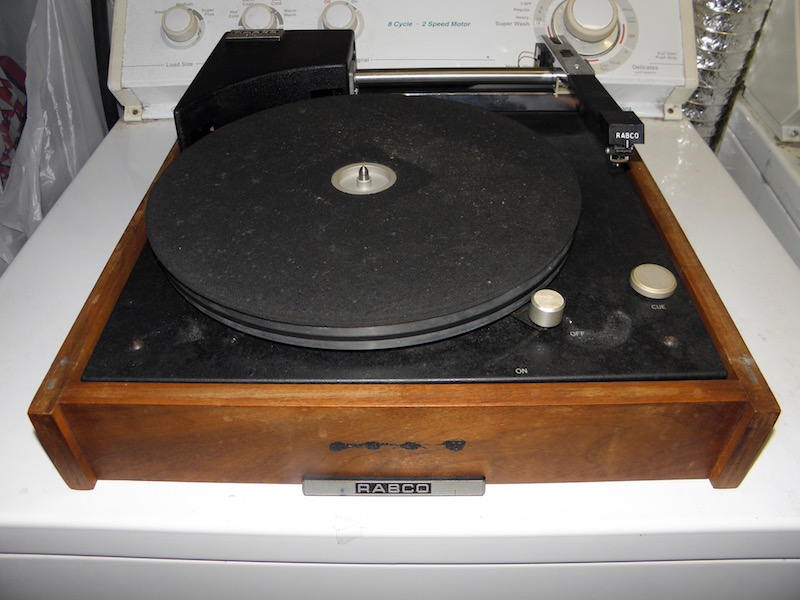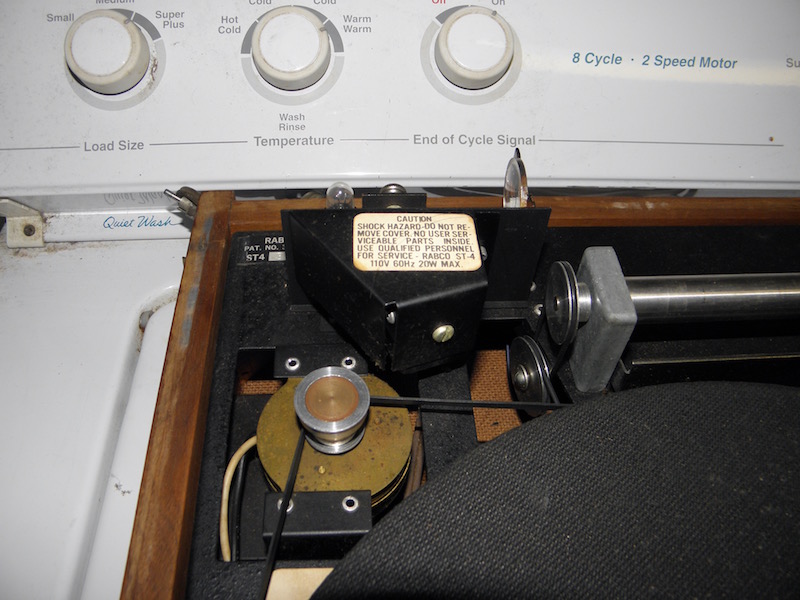I bought it new in 1972 and have moved with it several times. The next to last time was to a house I lived in for 34 years before moving a couple of weeks ago. I did not use it that much. It had gotten geriatric in that when first powered up it spun (at 33-1/3 the only speed I used) slowly and then took a few revolutions to get up to the right speed.
When I moved, I did not want to take it apart and put it back together. I packed it up carefully and took it in my car not wanting to worry about how the movers might handle it. When I unpacked it, I was amazed to find that the platter drive belt was much larger than it was and would not longer work. Somehow or another it lost it elasticity during the move. I bought a new drive belt (on eBay from Germany) figuring that would take care of the problem. It is the right size. However, the platter does not turn. Without the belt on drive pulley spins. but not with the belt on. My guess is that either the motor no longer has enough oomph to turn the pulley and the platter or the unit needs some lubrication somewhere.
I have no idea what I can do. The manual says the platter bearing well has a reservoir filled with oil and no additional oil would be needed. The platter seems to spin normally when I rotate it by hand.
Has anyone run into this problem before? Any ideas about what I can or should do? After over 45 years, it does not owe me anything, but I have a sentimental attachment to it, so I would prefer not to trash it or try to sell it as a repair project and buy a new turntable.
Thanks for any ideas you can provide.
When I moved, I did not want to take it apart and put it back together. I packed it up carefully and took it in my car not wanting to worry about how the movers might handle it. When I unpacked it, I was amazed to find that the platter drive belt was much larger than it was and would not longer work. Somehow or another it lost it elasticity during the move. I bought a new drive belt (on eBay from Germany) figuring that would take care of the problem. It is the right size. However, the platter does not turn. Without the belt on drive pulley spins. but not with the belt on. My guess is that either the motor no longer has enough oomph to turn the pulley and the platter or the unit needs some lubrication somewhere.
I have no idea what I can do. The manual says the platter bearing well has a reservoir filled with oil and no additional oil would be needed. The platter seems to spin normally when I rotate it by hand.
Has anyone run into this problem before? Any ideas about what I can or should do? After over 45 years, it does not owe me anything, but I have a sentimental attachment to it, so I would prefer not to trash it or try to sell it as a repair project and buy a new turntable.
Thanks for any ideas you can provide.





